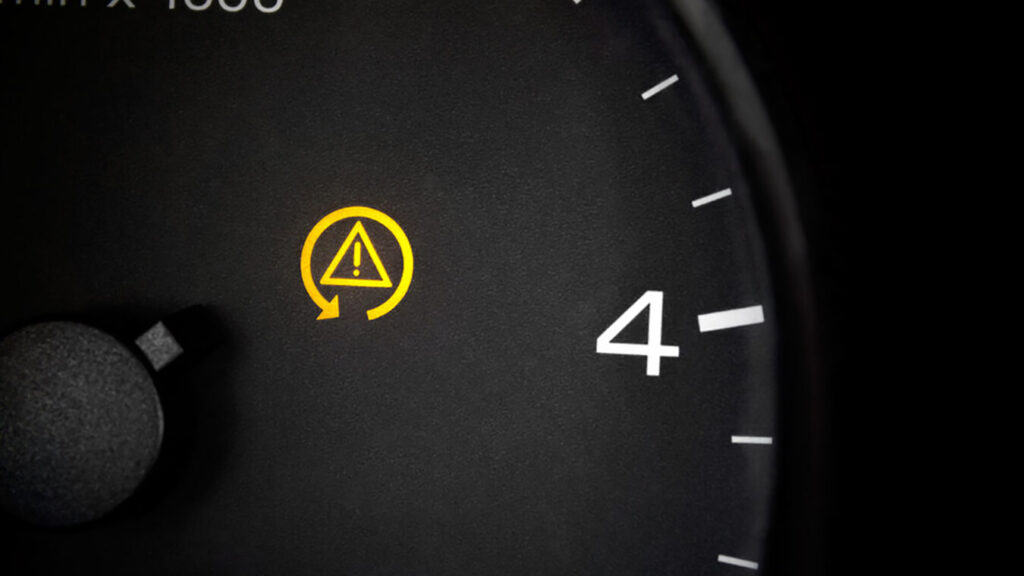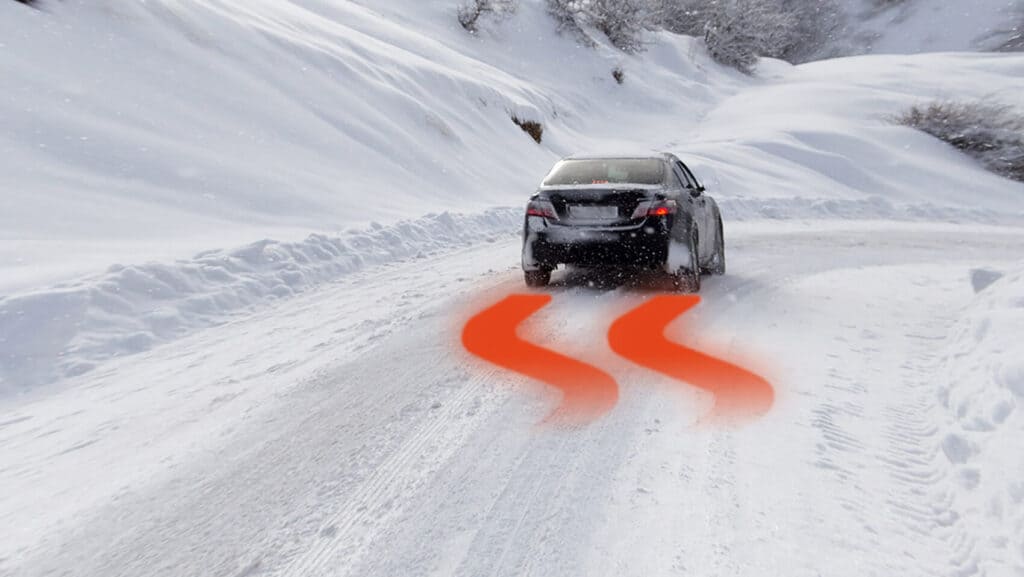A Slippery Situation – Unravelling the World of Traction Control
The journey of a thousand miles begins with a single step, and sometimes that step can be on a slippery road. Enter traction control, a modern marvel ensuring that each step, or rather drive, remains steady. But when that peculiar light shines on your dashboard, what message is your car trying to convey?
Traction Control Demystified: The Cornerstone of Safe Driving
At its core, traction control is your vehicle’s protective companion against skidding. If you ever pondered on the seriousness of the traction control light, understand this: Given its integral role in vehicle stability, it’s not something to brush off.
• Purpose Defined: The primary purpose of the traction control system (TCS) is to prevent wheel spin during acceleration. This ensures that all tires are moving at a speed that allows them to maintain maximum grip on the road.
• Mechanism Breakdown: How does it achieve this? By continuously monitoring the speed of each wheel. If one or more wheels start to spin faster than others (indicating potential loss of traction), the system will automatically reduce engine power or apply brake force to specific wheels, allowing them to regain grip.
• Safety Reinforced: It’s not just about maintaining traction; it’s about safety. Reduced skidding means the driver has better control, resulting in fewer accidents. In conditions like rain, snow, or even gravel, the importance of TCS becomes even more pronounced.
• Enhanced Driving Dynamics: Apart from safety, TCS also enhances the overall driving experience. With improved traction, drivers can enjoy smoother accelerations and better handling, especially in challenging road conditions.
• Warning Significance: When the traction control light comes on, it’s signaling a potential issue with this crucial system. Ignoring it doesn’t just jeopardize the system’s benefits but can compromise the vehicle’s safety. Hence, it’s vital to understand its gravity and address any alerts promptly.

From Skidding Wheels to Flashing Lights: Causes of Traction Control Warnings
Traction control is quite the sentinel, and when it detects a potential slip, it quickly jumps into action. The light can illuminate due to a myriad of reasons:
• Sensor Fatigue: Just like any piece of tech, sensors aren’t immune to wear and tear. Over time, they can degrade, leading to a less effective monitoring system.
• Steering Goes Off-Angle: Faulty steering angle sensors can throw off the traction control system. This sensor informs the system about the steering wheel’s direction, and if it’s out of whack, so is your traction control.
• Mismatch Mania: The wheel-speed sensors are vital for assessing if all wheels are turning at the required speed. Any mismatch or discrepancy here can trigger the warning light.
• Environmental Factors: Mud, snow, or even a build-up of road debris can hinder the sensor’s function, leading to false or premature warnings.
• Software Snags: Sometimes, the issue isn’t hardware but software. Outdated or glitchy system software can send the traction control into a tizzy.
• Hydraulic Control Units: Issues within the hydraulic control can disrupt the brake fluid pressure, influencing traction control.
The Traction Test: Diagnosing Underlying Issues
Embarking on the path to diagnose traction control problems can feel like piecing together a jigsaw puzzle. The initial step is a straightforward visual inspection. Take a moment to check the wheel sensors and related wiring. Look out for visible signs of damage, corrosion, or disconnections. Such issues can sometimes be the simple culprits behind the warning light’s unwelcome glow. However, visual examinations, while essential, only scratch the surface.
Diving deeper requires technological assistance. Onboard diagnostic (OBD) tools come into play here. When connected to your vehicle, these gadgets read and interpret specific error codes related to the traction control system. Each code corresponds to a unique issue, be it a sensor malfunction, software glitch, or communication breakdown. By deciphering these codes, you can pinpoint the underlying problem, offering a clearer roadmap to resolution. So, the next time that traction control light flickers, remember: with the right approach, diagnosis can be both systematic and precise.
Light’s On, but Should You Drive On? Weighing the Risks of Faulty Traction Control
Your dashboard lights up with the traction control warning. You glance at it and then feel the car; it seems to be running just fine. The road ahead looks clear, and there’s a compelling urge to press on. However, these warning lights exist for a reason. Just because the issue doesn’t present immediate symptoms doesn’t mean it’s inconsequential. In ideal road conditions, it might seem like everything’s alright.
But here’s where caution must step in. Especially in places like Ontario, where weather conditions can switch in the blink of an eye, traction is your car’s defense against skids. Wet roads, snowy patches, or sudden turns — in such scenarios, a malfunctioning traction system can escalate risks. Even if the drive feels short and straightforward, remember: safety should never take the back seat. It’s not just about you; it’s about every other road user.
Practical Fixes: Navigating Traction Control Repairs and Costs
The repair spectrum varies, from simple sensor cleaning to more intricate electrical fixes. Depending on the issue’s complexity and your chosen mechanic, costs will fluctuate.
• Sensor Cleaning: Before diving into replacements, sometimes a thorough cleaning of sensors can resolve the issue. This is often the most cost-effective solution.
• Sensor Replacement: Worn-out sensors will need a swap. Depending on the car model, these can vary in expense.
• Software Updates: In the age of tech-savvy cars, keeping your vehicle’s software up-to-date is paramount. An update might fix those software-related traction control issues.
• Steering Angle Reset: If the problem is rooted in the steering angle sensor, it might require a simple reset, which is a straightforward procedure for most mechanics.
• Hydraulic Control Unit Inspection: This is a more intricate procedure, involving a check of the unit’s components and possibly some replacements.
• Professional Diagnostics: Uchanics mobile mechanics company in Canada offers comprehensive diagnostics, ensuring you’re not just treating symptoms but addressing the root cause.
• Cost Variables: The repair price tag can vary based on factors like car make, the severity of the problem, and the mechanic’s rate. Always seek a trusted mechanic’s estimate before diving into repairs.

The Brake-Traction Link: How One Impacts the Other
When we talk about a vehicle’s brakes, most people envision the physical components: the brake pads, discs, or the pedal under their foot. But today’s vehicles are smarter, leveraging sophisticated systems to optimize performance and safety. One of these systems, the traction control, is intrinsically tied to braking. It monitors the speed of each wheel, ensuring uniformity, and in doing so, maintains stability and grip, especially during sudden braking maneuvers.
Now, what if these wheel speed sensors hiccup or fail? The ramifications are twofold. Firstly, the braking system can’t modulate the brake force optimally, leading to uneven braking. Secondly, the traction control won’t intervene efficiently when wheel slippage occurs. This symbiotic relationship emphasizes how each system, while functioning independently, leans on the other for optimal performance. It’s a dance of technology, ensuring every drive is as safe as possible.
Persistent Problems: When the Traction Control Refuses to Stand Down
Staring at an unyielding traction control light can be both frustrating and confusing. Many drivers, in their exasperation, often ask, “Why won’t my traction control light go off?” The majority of the time, stubborn issues like these are birthed from sensor malfunctions or software inconsistencies. While a quick reset might offer a momentary solution, it’s important to remember that if the light refuses to dim, there’s likely a deeper, more intricate problem awaiting attention.
On the other hand, a consistent illumination, rather than being an annoyance, should be seen as an urgent plea from your vehicle. It’s hinting that underlying issues need to be addressed. Such persistent problems might be more complex than they appear on the dashboard, and diving into a detailed examination could be the key to resolving them.
Sensor Central: Locating the Heartbeat of Traction Control
When discussing the traction control system, one cannot overlook the pivotal role of its sensors. The wheel speed sensors, to be precise, carry the onus of monitoring the harmony of the wheels. Positioned usually close to the brakes, their primary job is to keep a vigilant eye on wheel speeds, ensuring all wheels are in sync and performing as they should.
Yet, their responsibility doesn’t end there. These sensors, in their silent vigil, act as the primary informants for the entire system. At the first sign of discrepancy, they alert the system, ensuring timely interventions. Given their significance, they can be rightfully dubbed as the ‘heartbeat’ of the traction control system, bridging the gap between seamless driving and potential mishaps on the road.
Bringing our Traction Trek to a Close
Traction control, while easily brushed off as another tech addition, stands as a sentinel safeguarding your car’s stability. As the clouds of confusion disperse, we hope you feel empowered with a clearer understanding of this essential system. Should you ever face traction control challenges, remember that Uchanics, a trusted mobile mechanics company in Canada, is always at your beck and call, ready to assist.
